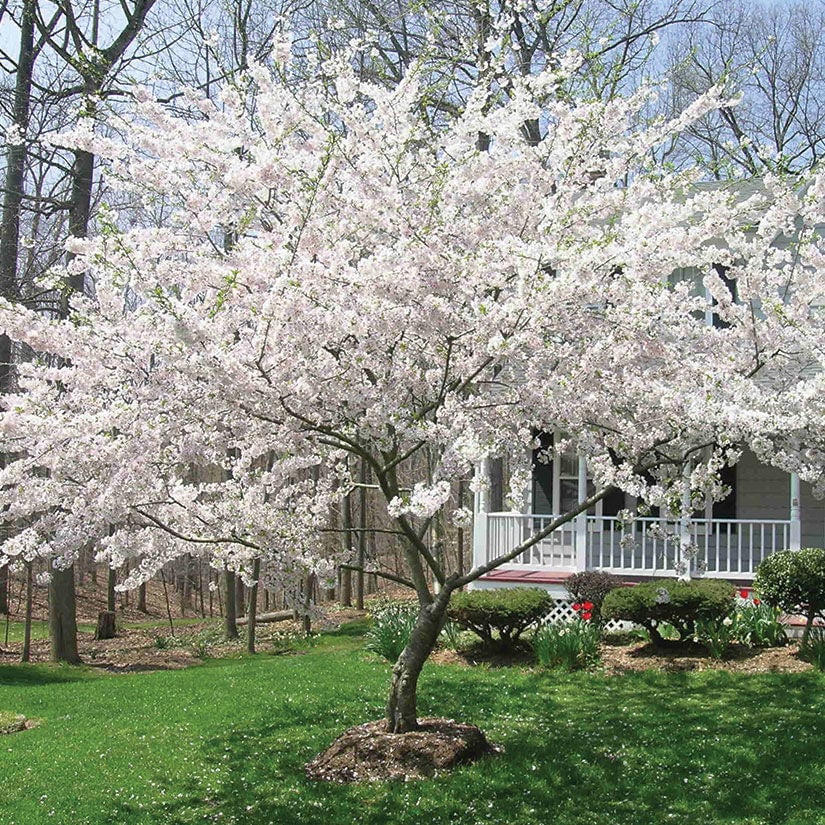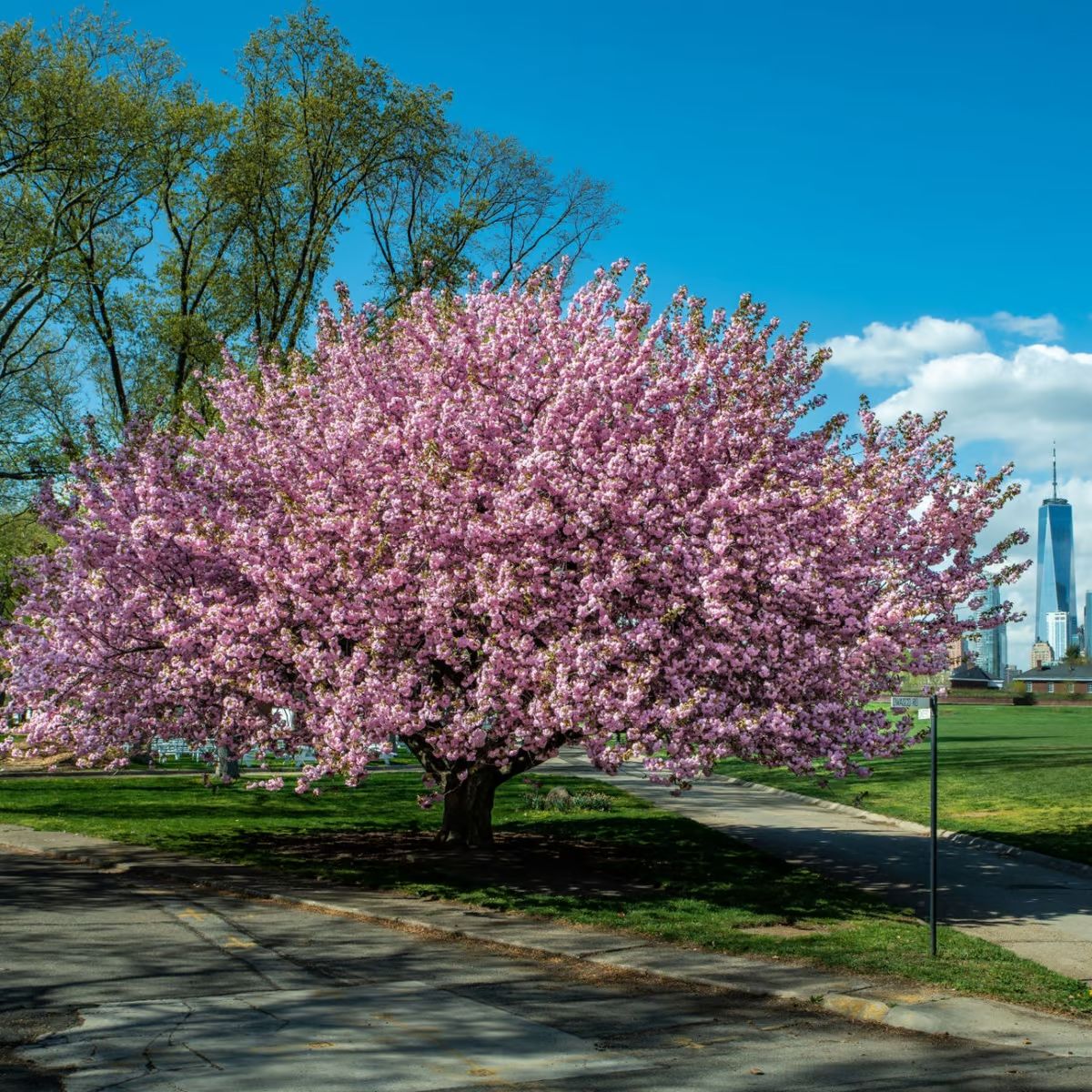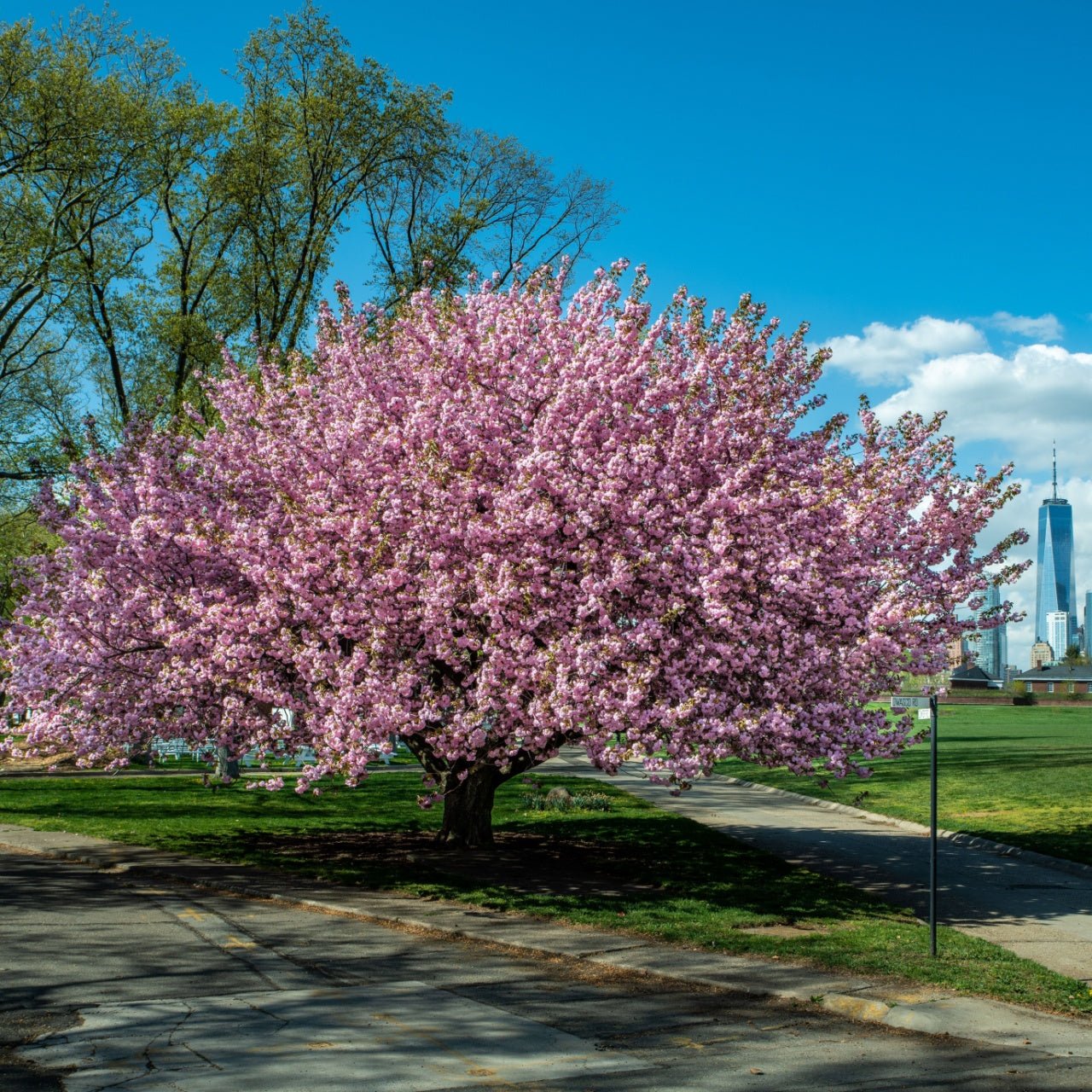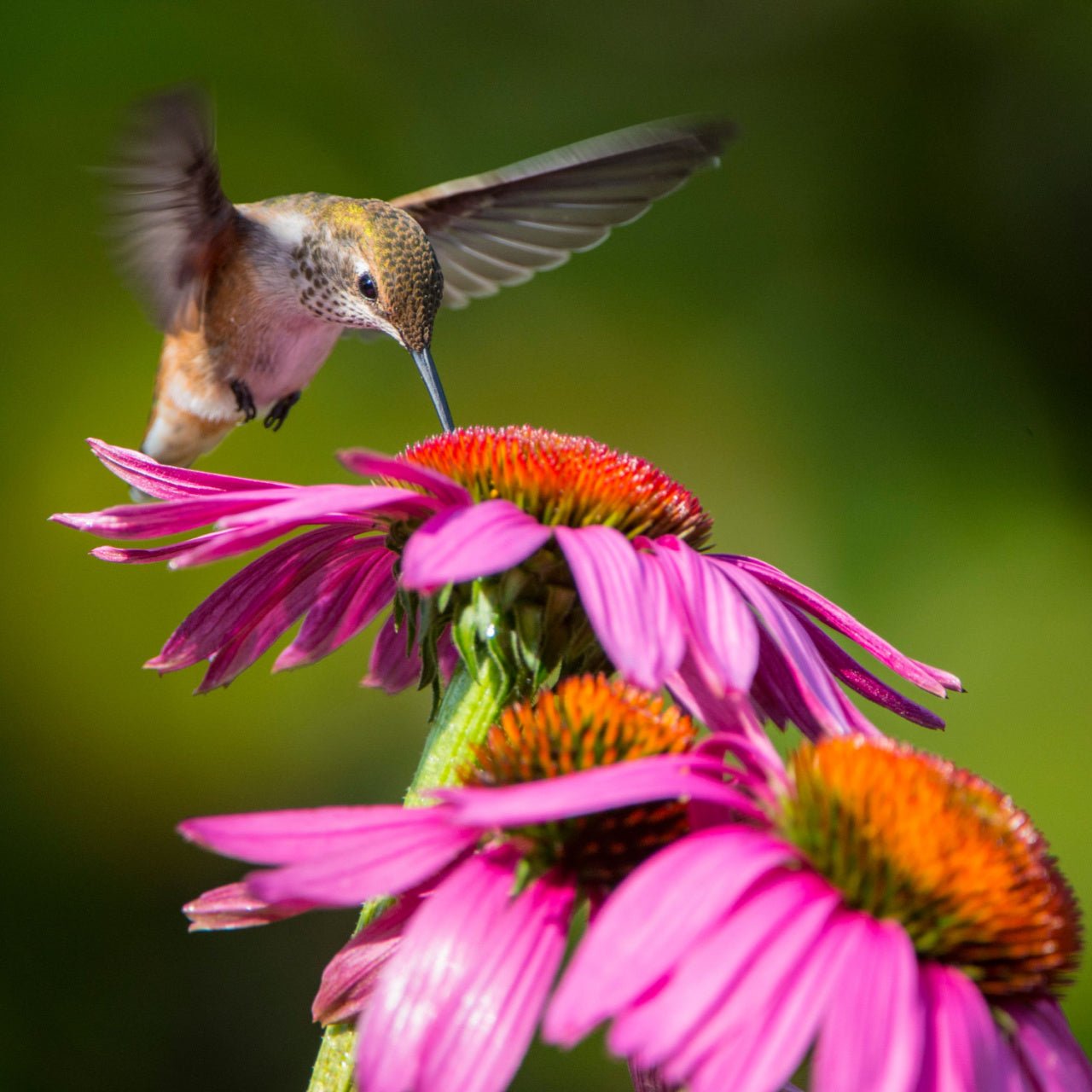


Yoshino Cherry Trees
Stunning springtime pink blossoms
Vibrant fall foliage colors
Perfect for ornamental landscaping
Thrives in
ZONE 5ZONE 6ZONE 7ZONE 8This plant ships:
November 20251 Year Guarantee on all plants
Yoshino Cherry Trees - Prunus × yedoensis
The famed Yoshino Cherry Trees are prized around the world for their heavenly, spring blooms. Throngs of tourists from every corner of the world make their way to Japan every spring for the Cherry Blossom Festival, where they can witness the magic of a sky filled with pink and white flowers in person. These trees are native to east Asia but can thrive in many subtropical or temperate climates in the middle latitudes. This means you might find these in the southern United States, or at the Washington DC Cherry Blossom Festival where they are planted with abundance for all to enjoy.
Plant Details - Yoshino Cherry Trees
Family: Rosaceae
Light Requirement: Full sun
Water Needs: Moderate - High
Height: 25-40 ft
Spread: 25-30 ft
Growth Rate: Moderate
Soil Preference: Moist, well drained
Season of Interest: Spring
Flower Color: White
Fruit: Small cherry
Wildlife Value: Robins, Thrushes, Small mammals, Butterflies
Notable Characteristics - Yoshino Cherry Trees
The Yoshino Cherry Trees are almost exclusively attributed to Japan, but interestingly there is some scientific disagreement about their true native origin. Many agree that its origin is actually on Jeju Island in Korea. Koreans purport that it was stolen by the Japanese during the Japanese colonization of Korea in the early 1900s. The fruit is small and not quite sweet, so it’s not common for humans to eat although it's possible. There may not be much flesh on these cherries, but they are very juicy and will stain absolutely anything with their bright red color. The flowers of this tree are white, with hints of pink at the base of their petals. They have five small, round petals and golden yellow stamnes.
Landscape and Maintenance
As magnificent as these trees are, they are unfortunately high maintenance. They are susceptible to a large amount of diseases such as leaf spot, die back and leaf curl. They are similarly vulnerable to damage from insects such as aphids, spider mites, caterpillars, Japanese beetles and borers. The Yoshino Cherry Trees can be found growing along riverbanks, but are happy anywhere in Zones 5-8 with enough sunlight and water, especially in their first year.
This Is How Your Plants Will Look upon Delivery

Bloom Season
Spring
Bloom/Foliage Color
White
Height at Maturity
Under 25 Feet
Care
The Yoshino Cherry Trees thrive in well-drained soil and require regular watering, especially during dry periods. Mulch around the base to retain moisture and suppress weeds. Pruning should be done after blooming and fertilized annually in early spring.
Plant Reproduction
Yoshino Cherry Tree spreads primarily through seed dispersal and suckers
Plant bare root trees during the dormant season in early spring or late fall (November through April). Dig the hole twice as wide as the roots so the soil is well-drained. Position the tree so the root flare is at or just above ground level. Fill the hole back with the soil you dug from and water. Maintain soil moisture, especially in the tree's early years, by providing deep, regular watering. Apply a 2-4 inch mulch away from the trunk at the base to retain moisture and suppress weeds. Prune trees during the first few seasons to establish strength and resilience, remove damaged branches, and continue maintenance pruning as the tree matures. Regularly inspect for pests and diseases and apply integrated pest management practices. Protect young trees from mechanical damage and extreme temperatures with tree guards, and stake them if necessary for support, removing the stakes after one or two years.
Shipping date depends on the date displayed and chosen when you order from the product's page.
We only accept returns on plants verified dead. If you think your plants have died, we offer a 1 year warranty, please use this File a Claim Link to verify dead plants and start with return warranty process.





Lush Green Foliage:
The tree’s rich green leaves turn a vibrant orange-red in the fall, adding seasonal interest and color to your landscape.
Spectacular Blossoms:
Kwanzan Cherry Trees produce stunning double-pink flowers in spring, creating a breathtaking display of color.
Low Maintenance:
This tree is relatively easy to care for, requiring minimal pruning and care while providing consistent beauty year after year.
Compact Size:
With a manageable size, the Kwanzan Cherry is perfect for smaller gardens or urban landscapes, offering beauty without taking up too much space.
Caring Tips
How do I care for my Yoshino Cherry Trees?
Each box contains detailed care instructions and information about your product. But here's the basics.
Care Tips
The Yoshino Cherry Trees thrive in well-drained soil and require regular watering, especially during dry periods. Mulch around the base to retain moisture and suppress weeds. Pruning should be done after blooming and fertilized annually in early spring.
Light Requirements
The Yoshino Cherry Tree thrives in full sun to partial shade. For optimal blooming and health, it prefers at least six hours of direct sunlight daily. In shadier locations, it may have reduced flowering and growth.
Hardy Planting Zones
5 • 6 • 7 • 8
Header
Use this content to share information about your store and products.
Frequently Asked Questions
How often should I water my plants?
How do I know if my plant is getting too much or too little sunlight?
What should I do to prepare my plants for winter?
What are the signs that my plant needs fertilizing?
How can I prevent pests from damaging my plants?
How do I choose the right plant for my climate zone?






